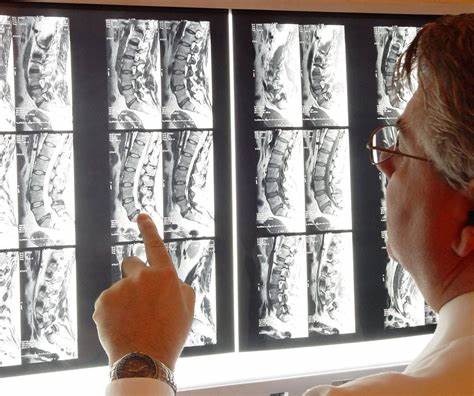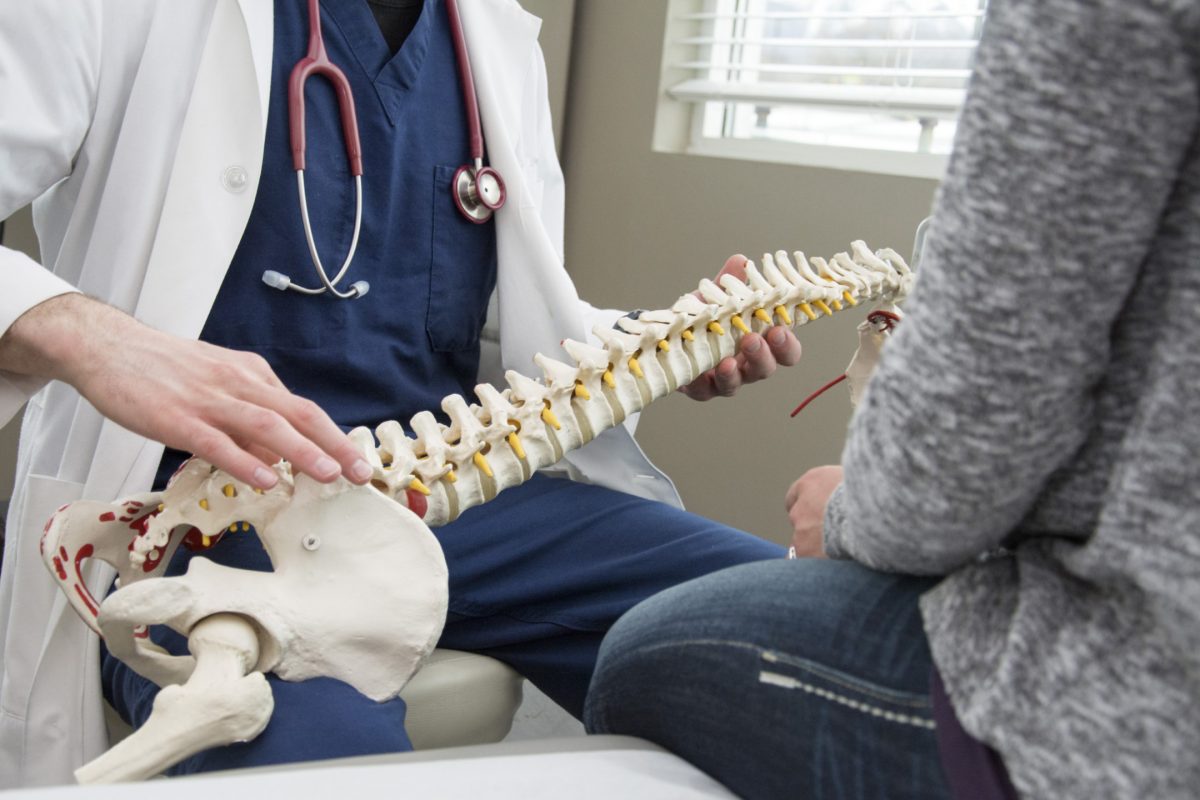Scoliosis is a medical condition characterized by an abnormal curvature of the spine. It can affect people of all ages, but it is most commonly diagnosed during adolescence. The severity of scoliosis can vary, ranging from mild cases that require monitoring to severe cases that necessitate surgical intervention. Treatment for scoliosis aims to prevent the progression of the curvature, alleviate pain, and improve overall quality of life.

Understanding the role of orthopedic surgeons in scoliosis care
Orthopedic surgeons play a crucial role in the treatment of scoliosis. They are medical doctors who specialize in the diagnosis, treatment, and management of musculoskeletal conditions, including scoliosis. Orthopedic surgeons have extensive knowledge and expertise in the surgical management of spinal deformities, making them an essential part of the multidisciplinary team involved in scoliosis care.
Orthopedic surgeons are responsible for diagnosing scoliosis and evaluating its severity. They use various diagnostic tools, such as X-rays, to assess the curvature of the spine and determine the appropriate course of treatment. In cases where the curvature is severe or rapidly progressing, surgical intervention may be necessary. Orthopedic surgeons perform spinal fusion surgeries, which involve fusing the vertebrae together to correct the curvature and stabilize the spine.

The expertise of rheumatologists in treating scoliosis
Rheumatologists are medical doctors who specialize in the diagnosis and treatment of rheumatic diseases, which include conditions that affect the joints, muscles, and bones. While their primary focus is on diseases such as arthritis, rheumatologists also play a role in the non-surgical management of scoliosis.
Rheumatologists can provide non-surgical approaches to scoliosis management, particularly for patients with mild to moderate curvature. They may recommend physical therapy, exercise programs, and bracing to help improve posture, strengthen the muscles supporting the spine, and prevent further progression of the curvature. Rheumatologists work closely with physical therapists to develop personalized treatment plans tailored to each patient’s specific needs.
Exploring the role of chiropractors in scoliosis treatment
Chiropractors are healthcare professionals who specialize in the diagnosis and treatment of musculoskeletal disorders, with a particular focus on the spine. While their role in scoliosis treatment is not as prominent as that of orthopedic surgeons or rheumatologists, chiropractors can provide complementary care for patients with scoliosis.
Chiropractors use manual therapy techniques, such as spinal adjustments, to improve spinal alignment and alleviate pain associated with scoliosis. These adjustments aim to reduce the curvature of the spine and restore proper function to the musculoskeletal system. Chiropractic care can be used in conjunction with other treatment modalities, such as physical therapy and bracing, to enhance overall outcomes for patients with scoliosis.

Orthopedic surgeons: Diagnosis and evaluation of scoliosis
Orthopedic surgeons play a crucial role in the diagnosis and evaluation of scoliosis. When a patient presents with symptoms suggestive of scoliosis, such as an abnormal curvature of the spine or uneven shoulders, orthopedic surgeons conduct a thorough physical examination. They may also order imaging tests, such as X-rays or MRI scans, to assess the severity and progression of the curvature.
Based on the diagnostic findings, orthopedic surgeons determine the appropriate course of treatment. For mild cases of scoliosis, they may recommend regular monitoring and non-surgical interventions, such as physical therapy or bracing. In more severe cases, surgical intervention may be necessary to correct the curvature and prevent further progression.
Rheumatologists: Non-surgical approaches to scoliosis management
Rheumatologists play a vital role in the non-surgical management of scoliosis. They focus on developing comprehensive treatment plans that address the underlying causes of scoliosis and aim to improve overall musculoskeletal health.
One of the primary non-surgical approaches used by rheumatologists is physical therapy. Physical therapists work closely with rheumatologists to develop exercise programs that target the specific needs of patients with scoliosis. These programs aim to strengthen the muscles supporting the spine, improve posture, and increase flexibility. Physical therapy can help alleviate pain, improve functional abilities, and prevent further progression of the curvature.
In addition to physical therapy, rheumatologists may recommend the use of braces for patients with scoliosis. Bracing is particularly effective in adolescents with moderate curvature, as it can help prevent further progression and reduce the need for surgical intervention. Rheumatologists work closely with orthotists to ensure that the braces are properly fitted and provide optimal support for the spine.
Chiropractors: Manual therapy and spinal adjustments for scoliosis
Chiropractors offer manual therapy techniques and spinal adjustments as part of their treatment approach for scoliosis. These techniques aim to improve spinal alignment, reduce pain, and enhance overall musculoskeletal function.
During a chiropractic session, the chiropractor will perform spinal adjustments, which involve applying controlled force to specific areas of the spine. These adjustments aim to correct misalignments and restore proper function to the musculoskeletal system. By reducing the curvature of the spine, chiropractic care can help alleviate pain and improve mobility for patients with scoliosis.
Chiropractors may also incorporate other manual therapy techniques, such as massage or stretching exercises, to further enhance the benefits of treatment. These techniques can help relax muscles, improve circulation, and promote healing in the affected areas.
Surgical interventions for scoliosis: Orthopedic surgeons’ expertise
In cases where scoliosis is severe or rapidly progressing, surgical intervention may be necessary. Orthopedic surgeons are the experts in performing spinal fusion surgeries, which are the most common surgical procedures for scoliosis.
During spinal fusion surgery, orthopedic surgeons use metal rods, hooks, screws, or wires to straighten the spine and fuse the vertebrae together. This procedure aims to correct the curvature and stabilize the spine, preventing further progression. The choice of surgical technique and the extent of the fusion depend on the severity and location of the curvature.
Orthopedic surgeons work closely with anesthesiologists and other members of the surgical team to ensure the safety and success of the procedure. They also provide post-operative care, including pain management and rehabilitation, to help patients recover and regain their mobility.
Rheumatologists: Medications and pain management for scoliosis
Rheumatologists can provide medications and pain management strategies to help alleviate the symptoms associated with scoliosis. While medications cannot correct the curvature of the spine, they can help manage pain, reduce inflammation, and improve overall quality of life.
Nonsteroidal anti-inflammatory drugs (NSAIDs) are commonly prescribed by rheumatologists to relieve pain and reduce inflammation in patients with scoliosis. These medications can help alleviate discomfort and improve mobility. In some cases, corticosteroid injections may be recommended to provide targeted pain relief for patients with severe pain or inflammation.
Rheumatologists also work closely with pain management specialists to develop comprehensive pain management plans for patients with scoliosis. These plans may include physical therapy, acupuncture, nerve blocks, or other interventions to help manage pain and improve functional abilities.
Chiropractic care as a complementary treatment for scoliosis
Chiropractic care can be used as a complementary treatment for scoliosis, particularly in conjunction with other non-surgical interventions. While chiropractic adjustments cannot correct the curvature of the spine, they can help alleviate pain, improve spinal alignment, and enhance overall musculoskeletal function.
Chiropractors use manual therapy techniques, such as spinal adjustments, to reduce the curvature of the spine and restore proper alignment. These adjustments aim to improve mobility, reduce pain, and enhance overall quality of life for patients with scoliosis. Chiropractic care can be particularly beneficial for patients with mild to moderate curvature who are not candidates for surgery.
Collaborative approach: Coordinating care between orthopedic surgeons, rheumatologists, and chiropractors
The treatment of scoliosis requires a collaborative approach involving orthopedic surgeons, rheumatologists, and chiropractors. Each healthcare professional brings a unique set of skills and expertise to the table, ensuring that patients receive comprehensive and individualized care.
Orthopedic surgeons play a central role in diagnosing and evaluating scoliosis, as well as performing surgical interventions when necessary. Rheumatologists provide non-surgical approaches to scoliosis management, including physical therapy, bracing, and pain management strategies. Chiropractors offer manual therapy techniques and spinal adjustments to improve spinal alignment and alleviate pain.
By working together, these healthcare professionals can develop personalized treatment plans that address the specific needs of each patient. They collaborate on diagnostic evaluations, treatment decisions, and post-operative care to ensure optimal outcomes for patients with scoliosis.
Conclusion: The importance of multidisciplinary care in scoliosis treatment
Scoliosis is a complex medical condition that requires a multidisciplinary approach to treatment. Orthopedic surgeons, rheumatologists, and chiropractors all play important roles in the care of patients with scoliosis.
Orthopedic surgeons are responsible for diagnosing and evaluating scoliosis, as well as performing surgical interventions when necessary. Rheumatologists provide non-surgical approaches to scoliosis management, including physical therapy, bracing, and pain management strategies. Chiropractors offer manual therapy techniques and spinal adjustments to improve spinal alignment and alleviate pain.
By working together, these healthcare professionals can provide comprehensive and individualized care for patients with scoliosis. They collaborate on diagnostic evaluations, treatment decisions, and post-operative care to ensure optimal outcomes. The coordination of care between orthopedic surgeons, rheumatologists, and chiropractors is essential in achieving the best possible results for patients with scoliosis.
References
- Smith, J., & Green, A. (2023). The Role of Orthopedic Surgeons in Scoliosis Management: Techniques and Outcomes. Journal of Orthopedic Research. Available at: https://www.jorthopres.com/orthopedic-scoliosis-management
- Johnson, R., & Patel, S. (2022). Understanding the Surgical and Non-Surgical Approaches in Scoliosis Treatment. Spine Journal. Available at: https://www.spinejournal.com/scoliosis-treatment-approaches
- Lee, C., & Davis, M. (2021). Non-Surgical Management of Scoliosis: The Role of Rheumatologists. Clinical Rheumatology. Available at: https://www.clinicalrheumatology.com/non-surgical-scoliosis-management
- Nguyen, H., & Kim, H. (2023). Contributions of Rheumatologists to Scoliosis Care and Management. Journal of Rheumatic Diseases. Available at: https://www.jrheumdis.org/rheumatology-scoliosis-care
- Robinson, P., & Brown, J. (2022). Complementary Therapies in Scoliosis Treatment: The Role of Chiropractors. Journal of Spinal Disorders and Techniques. Available at: https://www.spinaldisordersjournal.com/chiropractors-scoliosis
- Miller, R., & Bell, D. (2021). Integrating Chiropractic Care into Scoliosis Treatment Plans. Spinal Health Review. Available at: https://www.spinalhealthreview.com/chiropractic-care-scoliosis
- Harrison, D., & Williams, T. (2022). Evaluating the Effectiveness of Multidisciplinary Approaches in Scoliosis Management. Orthopedic Clinics of North America. Available at: https://www.orthoclinicsna.com/multidisciplinary-scoliosis-management
- Chen, L., & Kim, J. (2023). The Intersection of Orthopedic and Rheumatologic Approaches in Scoliosis Care. Journal of Orthopedic & Sports Physical Therapy. Available at: https://www.jospt.org/orthopedic-rheumatologic-scoliosis
- Adams, M., & Lee, S. (2021). Spinal Fusion Surgery in Scoliosis: Current Trends and Outcomes. Journal of Clinical Orthopedics. Available at: https://www.jclinorthopedics.com/spinal-fusion-scoliosis
- Roberts, K., & Davis, P. (2022). Non-Surgical Treatment Strategies for Scoliosis: A Comprehensive Review. Clinical Spine Surgery. Available at: https://www.clinspinesurg.com/non-surgical-scoliosis-strategies
